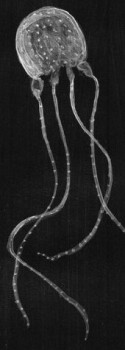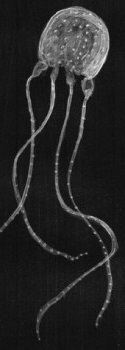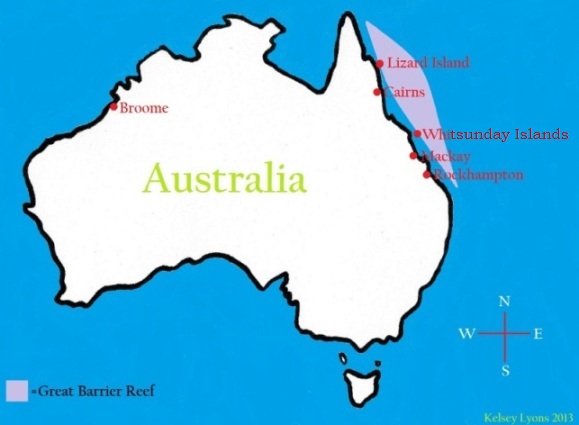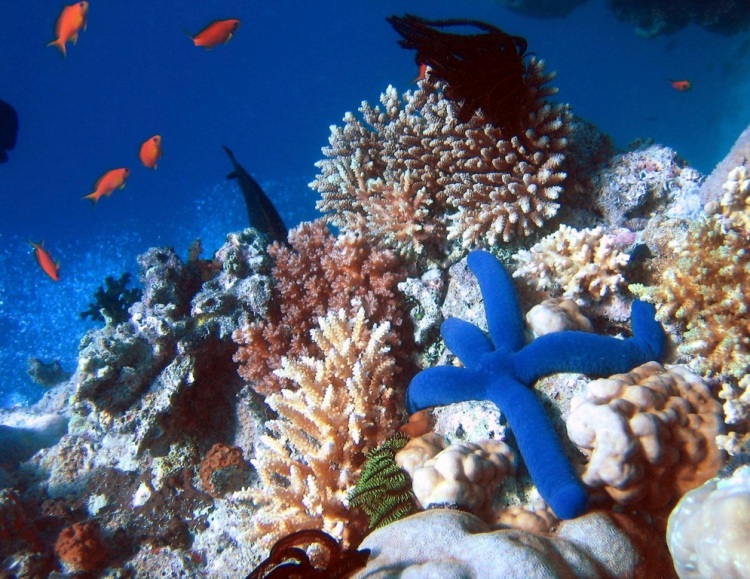Habitat
Australia is known for having many lethal animals, which makes the Carukia barnesi
right at home in the land down under! The Irukandji are native to Australia's
marine environment. They inhabit the northern, costal waters from Broome on the
western side to Rockhampton on the eastern side
(Kingsford, et. al 2012). The Great
Barrier Reef, larger cities, and tourist attractions (such as Cairns, Whitsunday
Islands, and Mackay), are included in this region. The map below
displays these cities and landmarks.
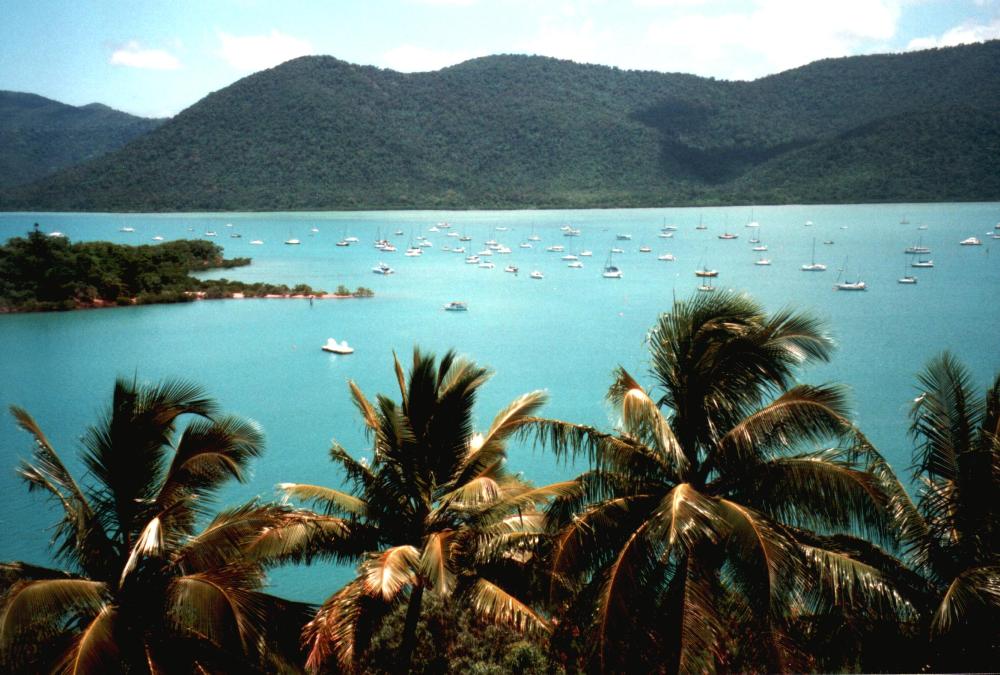
Wikimedia Commons: Cookaa
Carukia barnesi typically inhabit deeper waters (between 10-20 meters/33-66 feet) farther off-shore (Ruzi and Patel 2012). This is considered the Irukandji's niche. A niche is a temporal or geographical position or location in which an organism commonly resides due to competition for food and/or space, availability of food, or to avoid/exist with other organisms. C. barnesi most likely remains at this depth because another box jellyfish, Chironex fleckeri, inhabits the same regional waters, only closer to the surface. However, Irukandjis have been found at the water's surface and closer to shore due to the currents washing them to shallow waters and beaches.
Map made by Kelsey Lyons
Between December and February in 2007-2008, 2008-2009, and 2009-2010, Kingsford, Seymour, and O’Callahgan observed the abundance patterns of cubozoans in the Great Barrier Reef area. Over the three years, they collected, identified, and then released jellyfish directly offshore, in bays, next to islands, and around the reefs both during the day and at night. Carukia barnesi was included in the 40-50 cubozoan species for which they collected data. Their findings state that the Irukandji were most frequently found in groups around islands with high concentrations of granite, such as Lizard Island (on the map above). It is unknown why this occurs and more censuses must be taken to ensure that this data is reliable regarding the places of frequency and variables than can alter the abundance of these jellies. Different variables that can affect this habitat can be found on the bottom of this page.
This region is a very diverse and amazing habitat. Along with Carukia barnesi, the Great Barrier Reef alone has 1,500 tropical fish species, 400 coral species, and 20 reptile species. Also, an incredible 10% of the entire world’s fish population inhabits the Reef (Quicksilver 2013).
Wikimedia Commons User: Richard Ling
Some factors that affect the Irukandji's home include sunlight, temperature,
rainfall, and salinity. This costal/reef biome is characterized by a large
amount of sunlight and consists of only two seasons:
May-October: Warm temperature with little rainfall
November-April: High temperature with a lot of rainfall
The water temperature ranges from an average of 23°C (73.4°F) in July to an
average of 29°C (84.2°F) in February
(Travel Online 2013).
Salinity if a major factor in the reef habitats and averages 35 parts/1000 in
northern Australian waters (Kohli 2013).
If the salinity abruptly changes, usually due to extreme rainfall or flooding
from fresh bodies of water, many marine organisms can be negatively impacted
(Great Barrier Reef Marine Park
Authority 2009).
Next stop: Adaptation
UW-L
Last Updated: April 26, 2013
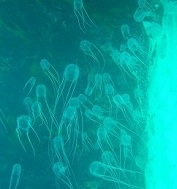

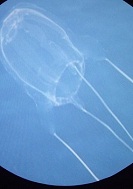 Wikimedia Commons: Peter Southwood Wikimedia
Commons: GondwanaGirl Wikimedia Commons: Zaneta Nemcokova
Wikimedia Commons: Peter Southwood Wikimedia
Commons: GondwanaGirl Wikimedia Commons: Zaneta Nemcokova
